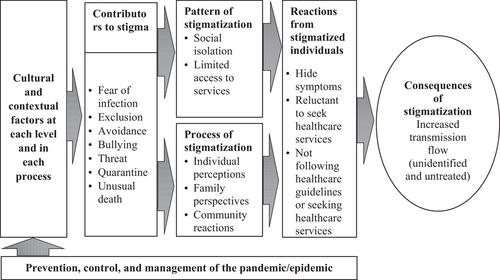COVID-19 transmission flow through the stigmatization process in Bangladesh: A qualitative study
Abstract
Introduction
Coronavirus disease (COVID-19) patients and survivors face stigma, discrimination, and negligence. The motives for and the different types and consequences of COVID-19-related stigmatization remain underexplored in Bangladesh. Therefore, this study examined how the COVID-19 stigmatization process is interlinked with transmission flow.
Methods
Using a qualitative research design, we conducted 20 in-depth interviews with infected and suspected caregivers and five key informant interviews with physicians, local media representatives, leaders, law enforcement officials, and local administrative officials in three divisional cities of Bangladesh. We performed thematic analysis to analyze the data.
Results
Participants expressed their experiences with multiple subthemes within three themes (stigma related to symptoms, stigma associated with isolation and quarantine, and stigma associated with health services). Participants reportedly faced stigma, for example, exclusion, hesitation to interact, avoidance, bullying, threat, and negligence caused by misinformation, rumors, and fear. Stigmatized individuals reportedly hid their symptoms and refrained from seeking healthcare services, contributing to COVID-19 transmission flow.
Conclusion
Revealed insights may contribute to effective prevention, control, and management of such an emerging pandemic. Further in-depth exploration of such stigmatization process will enrich unexpected outbreaks management effectively.


 求助内容:
求助内容: 应助结果提醒方式:
应助结果提醒方式:


